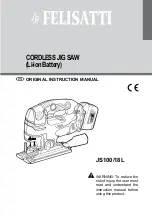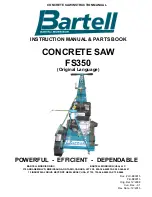
9
8
220-240 V
110 V
.........................4102 16 01... .................4102 21 01...
.........................4115 71 01...
...000001-999999
...000001-999999
.......................... 1800 W............................. 1800 W
................................ 8 A ............................... 15,5 A
.......................... 4400 min
-1
........................ 4000 min
-1
.....................305 x 30 mm .....................305 x 30 mm
............................. 2,4 mm ............................. 2,4 mm
....................111 / 342 mm .................... 111 / 342 mm
....................111 / 241 mm .................... 111 / 241 mm
..................... 63 / 241 mm ..................... 63 / 241 mm
..................... 41 / 241 mm ..................... 41 / 241 mm
..................... 63 / 241 mm ..................... 63 / 241 mm
..................... 41 / 241 mm ..................... 41 / 241 mm
..................... 166 / 53 mm ..................... 166 / 53 mm
..................... 166 / 10 mm ..................... 166 / 10 mm
.............267,5x20x1,5 mm .............267,5x20x1,5 mm
.......................... 2000 min
-1
........................ 2000 min
-1
.......................... 1600 min
-1
........................ 1600 min
-1
.......................... 6000 min
-1
........................ 6000 min
-1
.............................. 31 kg ................................ 31 kg
.............................. 95 dB (A) .......................... 95 dB (A)
............................ 108 dB (A) ........................ 108 dB (A)
............................... 4 m/s
2
.............................. 5 m/s
2
............................ 1,5 m/s
2
........................... 1,5 m/s
2
WARNING! Read all safety warnings and all instructions,
including those given in the accompanying brochure.
Failure
to follow the warnings and instructions may result in electric shock,
fi re and/or serious injury.
Save all warnings and instructions for future reference.
MITRE SAW SAFETY INSTRUCTIONS
Wear ear protectors.
Exposure to noise can cause hearing loss.
Hold power tool by insulated gripping surfaces only, when
performing an operation where the cutting tool may contact
hidden wiring or its own cord.
Cutting accessory contacting a
„live“ wire may make exposed metal parts of the power tool „live“
and could give the operator an electric shock.
LASER MARKER SAFETY INSTRUCTIONS
Avoid looking directly at the laser beam and looking at it with any
optical devices! The AEG laser marker may only be used in the
way intended - as described in this manual - and exclusively with a
mitre saw.
Improper use can lead to injuries and the impairment of your vision
or even to the complete loss of sight. Non-compliance with the
instructions given in this manual can result in severe physical
injuries (see also the section on "Mounting the AEG laser marker").
The laser diode corresponds to laser class 3A (specifi cations: 3.5
mW and 650 nm). The laser beam is weakened because of losses
due to refl ections within the prism and the rotation of the AEG laser
marker. The outgoing laser beam thus corresponds to class -2
laser device.
Class-2 laser devices can be operated without any specifi c safety
devices.
However, please note that upon opening of the device, its
unintended activation would send out a class 3A laser beam which
is dangerous to the naked eye. Therefore, always wear
laser-specifi c protective eyewear when working with the opened
device.
The AEG laser marker must only be used with the mitre saws
(see Fig. 31)
Do not replace the laser or LED with a different type. Any repairs
must only be carried out by the manufacturer or authorised service
agent.
We have supplied you with an adhesive label in your language and
now request that you please apply this in place of the English text
on the specifi cation plate before fi rst commissioning the machine.
ADDITIONAL SAFETY AND WORKING INSTRUCTIONS
Appliances used at many different locations including open air
must be connected via a current surge preventing switch.
Always wear goggles when using the machine. It is recommended
to wear gloves, sturdy non slipping shoes and apron.
Always disconnect the plug from the socket before carrying out any
work on the machine.
Only plug-in when machine is switched off.
Keep mains lead clear from working range of the machine. Always
lead the cable away behind you.
Sawdust and splinters must not be removed while the machine is
running.
Never reach into the danger area of the plane when it is running.
Before use check machine, cable, and plug for any damages or
material fatigue. Repairs should only be carried out by authorised
Service Agents.
Always use the protective shields on the machine.
Do not clamp the protective swing guard.
Do not use saw blades which are damaged or deformed
Replace the table insert when worn
Do not use saw blades not corresponding to the key data given in
these instructions for use.
The protective cover should only open when the machine is
lowered to the workpiece.
Do not use saw blades made of high-speed steel.
Any faults with the machine, including any related to the safeguard
or the saw blades, must be reported to the persons in charge of
safety as soon as the faults are discovered.
It is necessary to select a saw blade which is suitable for the
material being cut.
Never use the mitre saw to cut materials other than those specifi ed
in the instruction manual.
The handle lock must always be engaged when transporting the
mitre saw.
Only use the saw with guards in good working order and properly
maintained, and in position.
Keep the fl oor area free of loose material e.g. chips and cut-offs.
Only use saw blades which have been properly sharpened. It is
essential to adhere to the maximum speed specifi ed on the saw
blade.
Do not use any fl anges other than those supplied or indicated in
the instruction manual to secure the saw blade.
Refrain from removing any cut-offs or other parts of the workpiece
from the cutting area whilst the machine is running and the saw
head is not in the rest position.
Ensure that the machine is always stable and secure (e.g. fi xed to
a bench)
Long workpieces must be adequately supported.
Do not use cracked or distorted saw blades.
Before using the tool please read the instructions. If possible have
the tool demonstrated.
The dust produced when using this tool may be harmful to health.
Use a dust absorption system and wear a suitable dust protection
mask. Remove deposited dust thoroughly, e.g. with a vacuum
cleaner.
Stock having a round or irregular cross section (such as fi rewood)
must not be cut, as it can not be securely held during cutting.
When sawing thin stock layed on edge, a suitable auxilary fence
must be used for fi rm support.
Connect the saw to a dust-collecting device when sawing wood.
It is necessary to select a saw blade which is suitable for the
material being cut.
Use only blades specifi ed in this manual, complying with EN 847-1.
SPECIFIED CONDITIONS OF USE
The mitre saw can be used for sawing solid wood, bonded wood,
glued veneer, materials similar to wood, and plastics.
Do not use this product in any other way as stated for normal use.
ENGLISH
TECHNICAL DATA
MITRESAW
Production code.................................................................................
.......................................................................................................
Rated input ........................................................................................
Amps .................................................................................................
No-load speed ...................................................................................
Saw blade dia. x hole dia...................................................................
Saw blade thickness ..........................................................................
Cutting width
horizontal / vertical
90° 90° ..............................................................................
45° 90° ..............................................................................
90° 45°
......................................................................
90° 45°
......................................................................
45° 45°
......................................................................
45° 45°
......................................................................
Max. height at 90° / 90° .....................................................................
Max. height at 45° / 90° .....................................................................
Minimum work piece size ..................................................................
Laser Marker
Starting speed (RPM) .....................................................................
Switch-off speed (RPM) .................................................................
Max. speed (RPM) .........................................................................
Weight according EPTA-Procedure 01/2003 .....................................
Noise Information
Measured values determined according to EN 61 029.
Typically, the A-weighted noise levels of the tool are:
Sound pressure level (Uncertainty K=3dB(A)) ...............................
Sound power level (Uncertainty K=3dB(A)) ...................................
Wear ear protectors!
Vibration Information
Total vibration values (vector sum in the three axes) determined
according to EN 61 029.
Vibration emission value a
h
: ...........................................................
Uncertainty K = ..............................................................................
ENGLISH
WARNING
The vibration emission level given in this information sheet has been measured in accordance with a standardised test given in EN 61 029
and may be used to compare one tool with another. It may be used for a preliminary assessment of exposure.
The declared vibration emission level represents the main applications of the tool. However if the tool is used for different applications, with
different accessories or poorly maintained, the vibration emission may differ. This may signifi cantly increase the exposure level over the total
working period.
An estimation of the level of exposure to vibration should also take into account the times when the tool is switched off or when it is running
but not actually doing the job. This may signifi cantly reduce the exposure level over the total working period.
Identify additional safety measures to protect the operator from the effects of vibration such as: maintain the tool and the accessories, keep
the hands warm, organisation of work patterns.






































